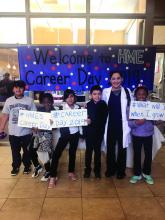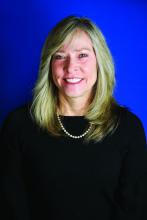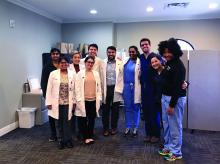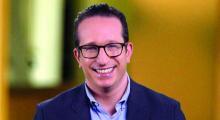Holistic review for residency
Dr. Vasquez, who grew up in South Texas in an uninsured family that received most of its medical care across the border in Mexico, believes that the “biggest stride being made today” with respect to diversity in the dermatology workforce – and in the larger physician workforce – is increased understanding of the role of social and cultural capital.
“We’d never really talked about this concept ... about how, if you don’t have the same upbringing, education, and resources, you’re already behind … and you may not do as well on standardized tests,” she said. “Now people are listening to it and understand it. That’s why more programs are looking at how to practice a more holistic approach to selecting applicants to interview.”
Some dermatology programs – at Wake Forest, UCSF, USC, Vanderbilt, and George Washington University for instance – have eliminated the use of U.S. Medical Licensing Examination step 1 scores and Alpha Omega Alpha Medical Honor Society status as filtering/screening metrics. Some also take a “second look” at UIM applicants.
Overall, those making changes are looking “at everything the applicant brings to the table – their story, their experiences,” said Dr. Elbuluk. “We want to understand the full picture of who they are and their journey to becoming a physician.”
Implicit bias training for members of residency review committees is becoming more common, as is such training across the board in dermatology departments. “We have to bring it to the forefront so that we can create more inclusive environments,” said Sharon E. Albers, MD, a dermatologist at Vanderbilt University Medical Center, Nashville, Tenn., who serves as the dermatology department’s diversity liaison to the medical school, and who, as a former faculty member of Meharry Medical College, remains engaged with the historically black institution.
One of her recent efforts, inspired by participation in the diversity champions program, has been developing pipeline programs to speak to middle and high school students about medicine and dermatology. For now, however, she credits a holistic review process for change. Last year, three of the five matched dermatology residents at Vanderbilt were UIM physicians – unprecedented for the institution, Dr. Albers said, and “evidence that holistic review works if you’re very intentional about it.”
Dr. Vasquez has analyzed data from the Accreditation Council of Graduate Medical Education and says that UIM dermatology residents comprised 8.0% of the total in 2019, marking an improvement over the prior 7 years. “We’ve introduced so many changes at the same time,” making it difficult to discern what’s most impactful, she said. “But something is working.”
(The AAMC, which has invested in pipeline programs for more than a decade and has championed holistic medical school admissions, states in its 2019 diversity data report that efforts to improve diversity in medicine have made “only marginal differences” – and that Black males in particular continue to be significantly underrepresented in medical schools. Persistent, structural racism was a common theme in the association’s 2015 report on Black males in medicine.)
Efforts to diversify the workforce – particularly holistic review – haven’t been without detractors. “It brings reaction,” Dr. Wintroub said. “Some people think you’re lowering quality in the field ... but that’s just not true.”
Diversity in the dermatology workforce is important not only for the care of patients from diverse backgrounds, but “perhaps more importantly, it brings new ideas and views and experiences into the field,” he said. “It pushes us to think in new directions ... that can only make our field better and richer.”
“We need to make sure our workforce is representative of the patients we serve – but also that all derms can manage patients of all skin types and demographics,” Dr. Shinkai said. “And we need more diversity in the leadership of our departments and dermatology organizations ... inclusivity needs to extend all the way to the highest reaches of our specialty.”
Adam Friedman, MD, professor and interim chair of dermatology at George Washington University and director of the department’s diversity, equity, and inclusion committee, agreed. “We need to both make sure our workforce mirrors the patients we serve, and said workforce is prepared to manage patients of all skin types and demographics. We need to cover the spectrum, from revamping medical education and mentorship opportunities to advancing diversity in the leadership of our departments, institutions, and societies. Addressing only part of the puzzle will not and can not be enough.”
Correction, 3/3/21: An earlier version of this article misstated Dr. Stephanie Florez-Pollack's name.





